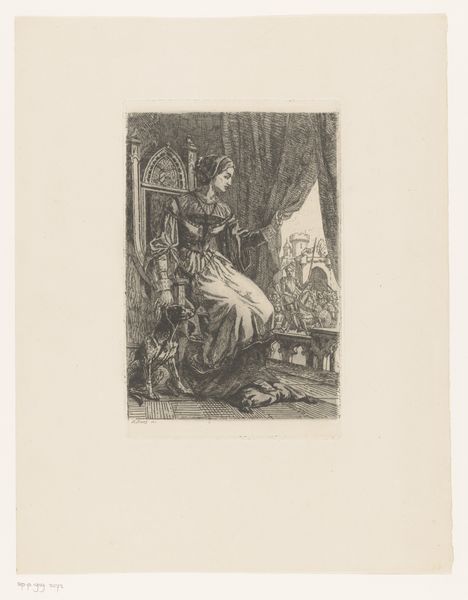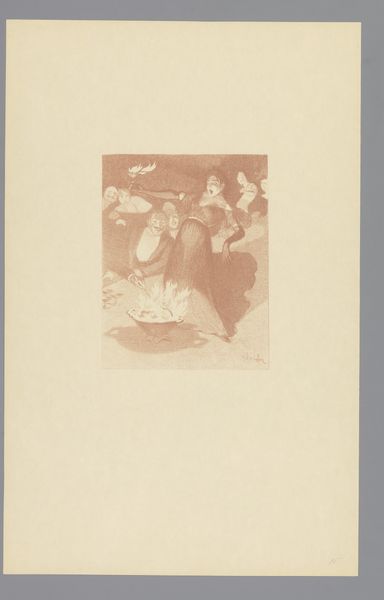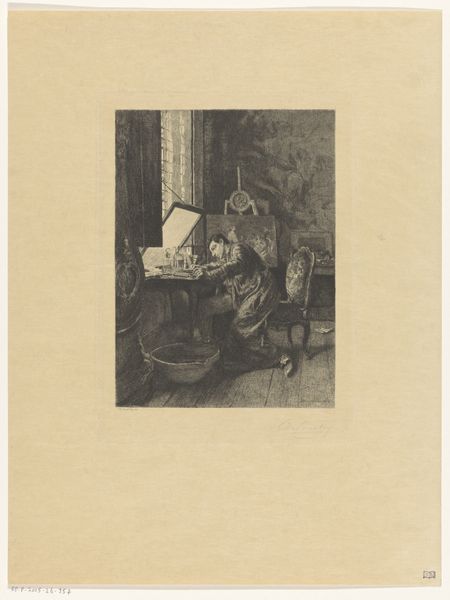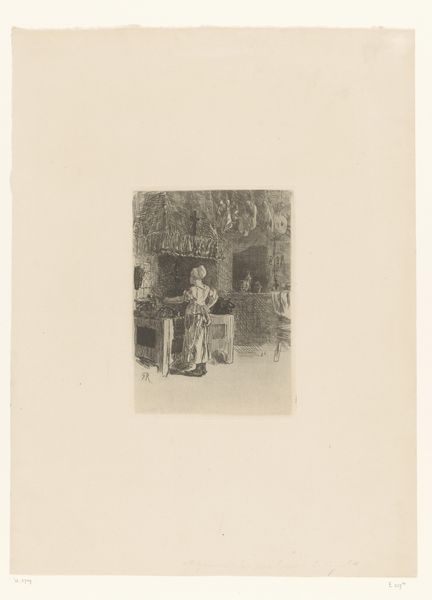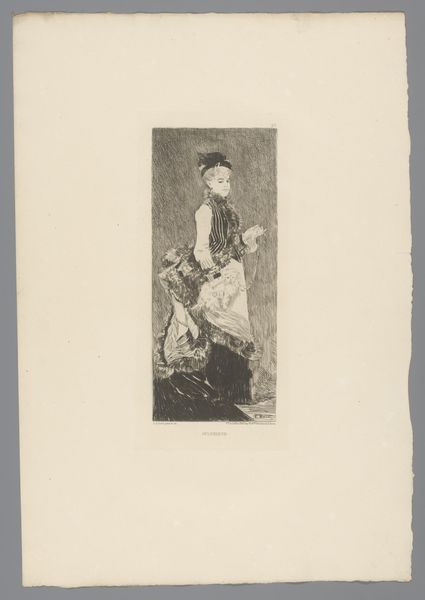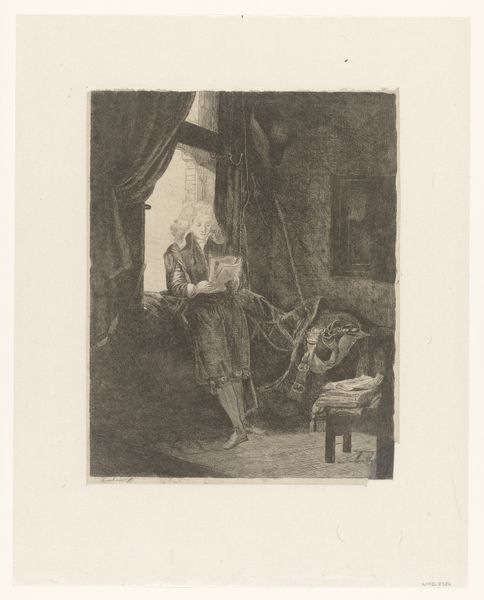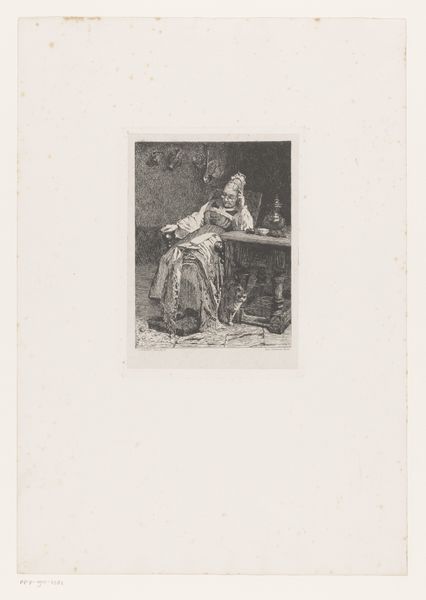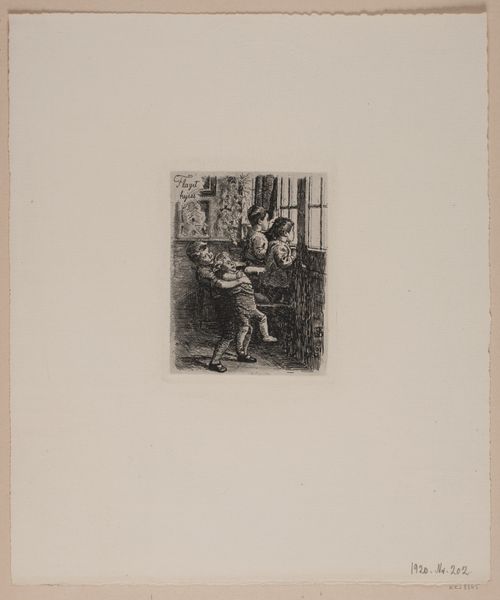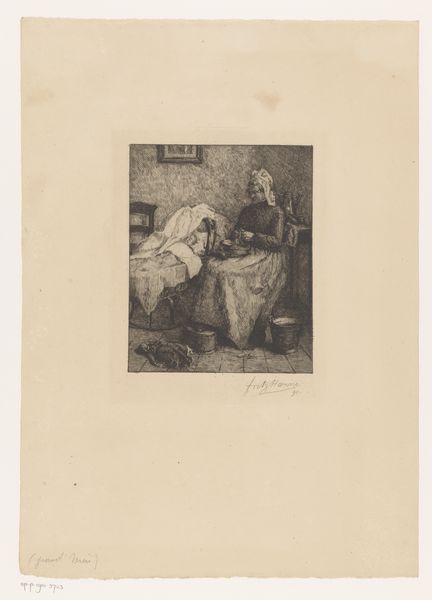
lithograph, print, etching
#
portrait
#
lithograph
# print
#
etching
#
genre-painting
#
realism
Dimensions: height 195 mm, width 160 mm
Copyright: Rijks Museum: Open Domain
Curator: This print, rendered in lithography and etching, offers a peek into the workspace of an artist. We're looking at Fernand Desmoulin’s "Portrait of Félicien Rops in his Studio," likely created sometime between 1875 and 1900. Editor: The workspace itself feels almost staged—deliberately chaotic. Is he really working or posing as one? There is something about how meticulously untidy the setting is that calls to mind the Romantic artist trope. Curator: I think that perceived artifice is very much the point. Notice Rops' intense gaze, almost confronting the viewer. Artists have always shaped their image, and the studio itself becomes a crucial symbolic space—a sanctuary and laboratory for the creative spirit. Here it's a bit messy, which tells the story of active engagement with materials. Editor: It raises an interesting question about labor, visibility, and artistic production, doesn’t it? Is this intended as a candid snapshot or a carefully crafted statement about what it means to *be* an artist in the late 19th century? And Rops, it must be said, cultivated quite the controversial reputation. Does this 'candid' portrait attempt to normalize, to domesticate that image, even slightly? Curator: Potentially, but that 'controversial reputation' wasn’t some empty trope, and he may just have embraced it through performativity, with Desmoulin playing along to produce such imagery as we see here. I note that he is set against a background with numerous objects and trinkets - artistic material - where symbolism is everything. And it speaks not just to Rops' unique position as an artist of 'erotic' imagery, but to the larger social forces surrounding art production during this time. This image is loaded with meaning. Editor: Agreed. Considering his, let's say, 'provocative' portfolio, there is little in this relatively contained space that signals resistance or sexual deviancy—only focused contemplation. Although to modern audiences the presence of erotica is less controversial. Curator: This brings us full circle in this reading of Desmoulin's work: context really does everything here! Editor: Indeed; even the seeming mundane hides stories about the times in which it was made.
Comments
No comments
Be the first to comment and join the conversation on the ultimate creative platform.

